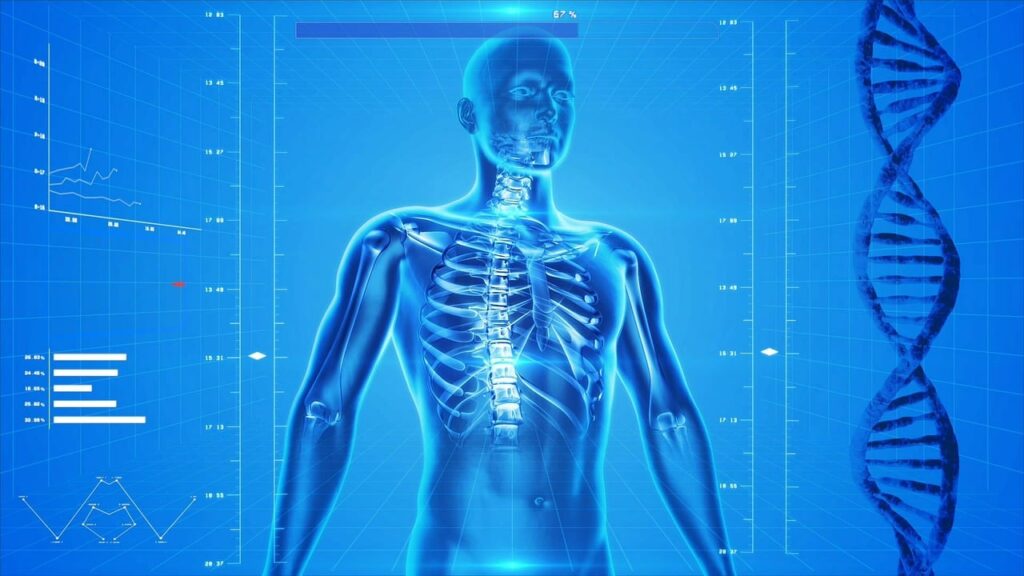Glucagon-like peptide-1 receptor agonists (GLP-1 RAs) such as semaglutide, liraglutide, and tirzepatide have transformed the landscape of obesity management and type 2 diabetes care. These medications reduce appetite, promote satiety, and support significant weight loss. Beyond metabolic health, emerging research suggests they may even reduce the risk of obesity-related cancers.
However…
There’s a growing concern: GLP-1 RAs may inadvertently reduce muscle mass, potentially weakening the body’s natural anti-cancer defenses.
For those taking these medications, understanding the biological mechanics of muscle in cancer prevention is critical—and taking proactive steps to preserve lean mass can make all the difference.
JUMP TO…
Why Skeletal Muscle Is a Key Player in Cancer Defense
GLP-1 Receptor Agonists and Lean Mass Reduction
The Consequences of Muscle Loss for Anti-Cancer Defense
Muscle Maintenance: The Proactive Approach
Balancing GLP-1 Benefits with Muscle Preservation
Why Skeletal Muscle Is a Key Player in Cancer Defense
Skeletal muscle is more than a structure that allows movement—it functions as a highly active endocrine organ. Muscle tissue produces myokines, small signaling proteins that influence systemic biology in ways that are directly relevant to cancer prevention.
Myokines and Immune Activation
Myokines such as IL-6, IL-15, and irisin play essential roles in stimulating the immune system. They:
Activate natural killer (NK) cells, which detect and destroy abnormal or malignant cells.
Enhance cytotoxic T-cell function, critical for identifying and eliminating cancerous cells.
Modulate inflammation, balancing pro-inflammatory and anti-inflammatory signals to prevent tumor-promoting chronic inflammation.
Amino Acids: Fuel for Immune Cells
Muscle serves as a reservoir of amino acids, particularly glutamine, which rapidly dividing immune cells rely on. Loss of muscle reduces the availability of these amino acids, limiting the capacity of T-cells and NK cells to respond to cancerous changes.
Metabolic Regulation
Muscle also contributes to glucose metabolism and insulin sensitivity. Adequate muscle mass helps regulate insulin and IGF-1 levels, both of which, when elevated, can create an environment that favors tumor growth. Maintaining muscle is therefore a crucial component of metabolic defense against cancer.
GLP-1 Receptor Agonists and Lean Mass Reduction
While GLP-1 RAs are helpful tools for weight loss, studies indicate that the weight reduction they promote is not solely fat. Lean body mass, including skeletal muscle, can also decrease.

Evidence of Muscle Loss
Clinical trials and observational studies have reported that:
Even when fat loss is greater than muscle loss, reductions in lean mass can still be significant for overall immune function and metabolic health.
Muscle loss is particularly concerning in individuals who do not engage in resistance training or consume adequate protein.
Muscle loss, or sarcopenia, is associated with higher morbidity and mortality in patients, including increased susceptibility to cancer and reduced resilience to treatments like chemotherapy and radiation.
The Consequences of Muscle Loss for Anti-Cancer Defense
The potential reduction of muscle mass in GLP-1 users has important implications:
Reduced Myokine Production
Lower muscle mass directly translates to fewer myokines circulating in the body. This weakens immune surveillance and anti-inflammatory signaling, both of which are critical in preventing tumor development and progression.
Impaired Immune Function
A decline in amino acid availability, particularly glutamine, limits the ability of immune cells to proliferate and function effectively. This can compromise the body’s ability to fight early cancerous changes.
Metabolic Imbalance
Loss of skeletal muscle can exacerbate insulin resistance and disrupt metabolic signaling pathways, potentially creating a more favorable environment for tumor growth, even in the context of overall weight loss.
Muscle Maintenance: The Proactive Approach

Preserving muscle mass while using GLP-1 RAs requires intentional lifestyle strategies. Maintaining lean mass isn’t passive—it takes consistent effort through nutrition, exercise, and sometimes supplementation.
Resistance Training
Structured strength-training programs stimulate muscle hypertrophy and help maintain myokine production. Even moderate resistance exercises 2–3 times per week can mitigate GLP-1–associated muscle loss.
Protein and Amino Acid Intake
Adequate dietary protein intake is essential for muscle preservation. Sources like lean meats, fish, eggs, dairy, legumes, and plant-based proteins provide the necessary amino acids for muscle repair and immune function. Branched-chain amino acids (BCAAs) may offer additional benefits for maintaining lean mass during weight loss.
Lifestyle Integration
In addition to resistance training and nutrition, overall physical activity—including walking, cycling, or swimming—supports metabolic health and maintains muscle function. Sleep, stress management, and hydration are also key contributors to optimal muscle maintenance.
Balancing GLP-1 Benefits with Muscle Preservation
GLP-1 RAs are highly effective for weight loss, diabetes management, and potentially reducing obesity-related cancer risk. However, the potential reduction in muscle mass presents a complex challenge. Without proactive measures, individuals may inadvertently compromise the very anti-cancer mechanisms that muscle supports.
Practical Recommendations
Incorporate resistance training at least 2–3 times per week.
Prioritize protein intake, aiming for at least 1.2–1.6 grams of protein per kilogram of body weight daily, adjusted for activity level.
Monitor body composition regularly, not just weight, to ensure muscle mass is preserved.
Work with healthcare providers to design a personalized exercise and nutrition plan alongside GLP-1 therapy.
By combining GLP-1 therapy with a muscle-preserving strategy, individuals can maximize the metabolic and cancer-preventive benefits of these medications without sacrificing lean mass.
Conclusion
Skeletal muscle is a critical but often overlooked component of cancer defense. Its role in producing myokines, supporting immune function, and regulating metabolism underscores why maintaining muscle mass is essential—especially for those using GLP-1 receptor agonists.
GLP-1 medications like semaglutide, liraglutide, and tirzepatide offer powerful tools for weight loss and metabolic health, and they may reduce obesity-related cancer risk. However, without intentional muscle preservation, these benefits could be offset by the loss of the body’s natural anti-cancer defenses.
For individuals on GLP-1 therapy, the message is clear: proactive resistance training, adequate protein intake, and holistic lifestyle strategies are not optional—they are essential for maintaining the immune and metabolic advantages that skeletal muscle provides. By protecting lean mass, patients can enjoy the full spectrum of benefits from GLP-1 therapy while safeguarding the body’s inherent mechanisms for cancer prevention.

